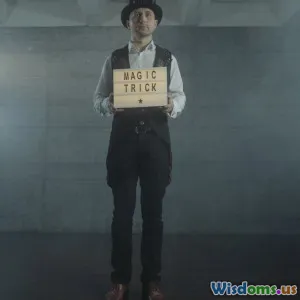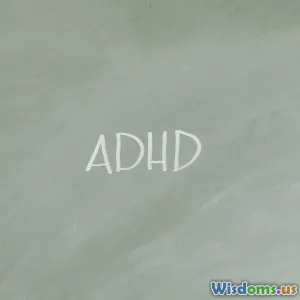
Mastering the Art of Illusion in Modern Times
8 min read Explore how magicians master modern illusions blending psychology, technology, and timeless trickery to captivate audiences today. (0 Reviews)
Mastering the Art of Illusion in Modern Times
Magic has been a source of mystery, wonder, and entertainment for centuries. Yet, the art of illusion has evolved remarkably in contemporary settings, blending classical techniques with cutting-edge technology and psychological insight. How do modern magicians keep audiences spellbound in an age where skepticism runs high and information is readily available? This article delves into the fascinating world of mastering illusion today, highlighting the powers of psychology, innovation, and timeless showmanship.
The Timeless Roots of Illusion
Before exploring the modern landscape, it’s essential to understand illusion’s origins. Dating back to ancient Egypt, where priests seemingly conjured magic through rituals, and evolving through legendary figures like Harry Houdini and David Copperfield, illusion has always combined dexterity, misdirection, and story-telling.
Classic illusions—levitation, disappearing acts, card manipulations—rely on well-honed manual skill and the art of deception. These fundamentals create a foundation upon which modern magicians build.
Psychological Mastery: The Silent Partner in Magic
One of the most powerful tools in a magician’s arsenal today is psychology. Contemporary performers don’t just execute tricks; they manipulate perception and cognition to create impossible outcomes.
Misdirection and Cognitive Load
Misdirection diverts the spectator's attention away from the secret action. Effective misdirection taps into how humans naturally filter information. For instance, the speed or timing of movements can overload the viewer's working memory, causing them to miss subtle sleights of hand.
As illusion historian James Randi explained, “The magician not only plays with his hands but plays the spectator’s mind.” Modern magicians now use deep psychological insights to refine misdirection, making the invisible actions truly imperceptible.
Priming and Suggestion
Magicians often prime audiences with subtle verbal or visual cues, setting expectations that help solidify the illusion. Derren Brown, a leading mentalist, extensively uses suggestion and conditioning—drawing from neuro-linguistic programming and social psychology—to predict or influence choices that seem supernatural.
For example, by subtly suggesting a card or phrase without the spectator realizing, the magician creates a sense of wonder grounded firmly in human thought processes rather than trick props.
Embracing Technology: The Digital Era of Illusion
Technology rejuvenates illusion in fascinating ways, pushing possibilities beyond traditional manual dexterity.
Augmented Reality (AR) and Projection Mapping
Some acts now integrate AR, where digital images enhance live performances via smartphones or glasses. Projection mapping allows magicians to create illusions of objects morphing or disappearing in space—almost like digital sorcery.
The tech-savvy illusionist Chris Ramsay sometimes incorporates these elements to mesmerize tech-oriented audiences, blending lasers, projections, and illusions.
Robotics and Automated Props
Innovations in robotics have introduced mechanically precise props that execute impossible moves flawlessly, eliminating human error. For instance, Dougie the Amazing Robot, a recent creation, amazed viewers by performing card tricks and coin manipulations with uncanny precision.
Online and Virtual Magic
With the pandemic accelerating digital transformations, magicians embraced online platforms. Virtual performances add layers of complexity since viewers can scrutinize every movement locally, compelling performers to innovate principles and use camera angles, digital editing, or illusions that work on-screen but confound in-person logic.
The Art of Narrative: Storytelling as Illusion’s Heart
Beyond tricks and gadgetry, the most compelling illusionists are master storytellers. The story provides context, engages emotions, and makes the magic memorable.
Take David Blaine’s endurance stunts and close-up street magic. His narratives of struggle and perseverance create compelling emotional hooks.
Enchanting an audience requires building tension and then delivering catharsis—the seemingly impossible completion of the story. Often, modern acts weave themes like hope, mystery, or human connection into the fabric of illusions, heightening impact.
Real-World Examples: Illusions That Changed the Game
-
David Copperfield’s "Escape from Alcatraz" (1976): Copperfield’s legendary escape combined high-risk stunt work with sophisticated illusions, making it both a thrilling narrative and technical feat.
-
Derren Brown’s "Russian Roulette" (2003): Demonstrated intense psychological control, blending risk with brilliant manipulations of perception.
-
Penn & Teller’s Exposure of Their Own Tricks: In a bid to innovate by revealing secrets, they challenge audiences and reinvent transparency in magic, highlighting creativity over pure secrecy.
-
The Weeknd’s "After Hours" Stage Shows: Though primarily a musical artist, he increasingly integrates illusion-inspired effects—holograms, killer stagecraft—that borrow from magician techniques to produce breathtaking shows.
Learning Illusion Today: Pathways and Resources
Aspiring illusionists have unprecedented resources. Digital tutorials, online communities, and magic conventions provide theory and practical demonstrations globally.
Books like Strong Magic by Darwin Ortiz or Magic and Showmanship by Henning Nelms dissect the principles behind powerful illusions more scientifically.
Local magic clubs, such as the International Brotherhood of Magicians (IBM), sustain traditional practice and mentorship.
Still, mastery requires constant practice, mental agility, and performance experience. Successful illusionists cite the crucial role of consistent rehearsal and audience feedback.
Ethical Considerations and the Future
Modern magicians face new ethical dilemmas—such as respecting audience consent and managing “exposure culture” where magic secrets can be rapidly leaked online.
Maintaining an ethical code balances wonder with respect, ensuring that illusion remains a joyful art form rather than deceptive harm.
Looking ahead, advancements like AI-driven illusions, holography, and neural interfaces hint at future horizons where magic merges with science fiction.
Conclusion: The Ever-Evolving Magic of Illusion
Mastering the art of illusion in modern times goes far beyond traditional sleight of hand. It integrates psychological acumen, storytelling artistry, cutting-edge technology, and ethical mindfulness. From street corners to viral videos, magicians transform perception and challenge what reality means.
For anyone enchanted by magic, understanding these contemporary dimensions invites appreciation of a vibrant, evolving craft. Whether as a spectator or aspiring magician, the future of illusion holds endless marvels awaiting discovery—and with mastery, perhaps the power to bend minds and inspire awe.
Rate the Post
User Reviews
Popular Posts





















